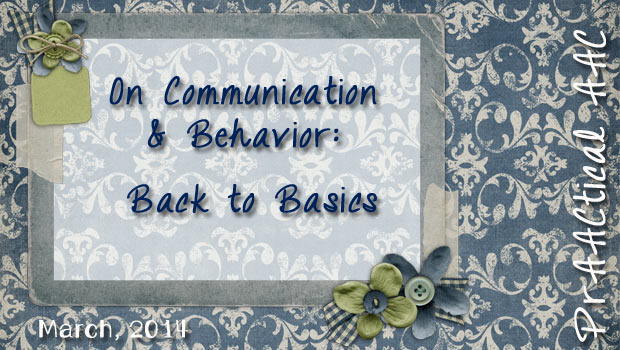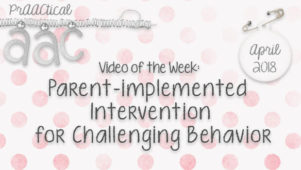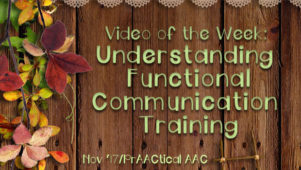On Communication and Behavior: Back to Basics

The other day we heard from an SLP who was supporting a child with significant communication difficulties. She contacted us because the team had hit a snag in their communication supports for this student. The student was successfully able to communicate with PECS but rarely did so. Instead, she used her body and challenging behavior to express herself most of the time.
“Why does she hit when she can use her PECS book to tell us what she wants?”
We’re not any more clairvoyant than you are, but we certainly had some ideas about this. Functional Communication Teaching can be very effective in helping people reduce their use of challenging behaviors in favor of more socially accepted means of communication. BUT, there are some of the basic principles that are have to be attended to when designing and implementing a set of behaviors that will replace the challenging behavior. This is something that Dr. Pat Mirenda (1997) has been writing about for quite awhile but is still an area of struggle for many teams.
Before we talk about that, it’s important to understand that challenging behaviors are learned responses, not something inherent to disability. They are generally adaptive responses, meaning that they are functional for the learner (i.e., helps him/her achieve a desired goal) in the natural context. Given that these behaviors are adaptive (functional) for the learner, how can we influence change to other ways of communicating? Researchers and practitioners have written volumes on that, but we’ll pull out two quick points for this post.
The new behavior has to be just as effective as the old one. If screaming in frustration gets me attention 100% of the time, and using a picture symbol gets me attention 90% of the time, it is unlikely that I will use pictures when I want your attention. It wouldn’t be logical, if you think about it. Why use a strategy that is LESS EFFECTIVE than the one that has been working up until now?
The new behavior has to be just as efficient as the old one. Consider that it takes me only a second to scream, but at least a few seconds to look through my PECS book to get the symbol I want, add it to a symbol strip, and hand it to someone. Why would I do something that takes longer and is harder to do, if something quicker and easier works just as well?
Effectiveness. Efficiency.
There is a lot more to consider, of course, but communication plans that consider these two factors go a long way to helping learners be successful. For more information on FCT, see these helpful resources.
:::::::::::::::::::::::::::::::::::::::::::::::::::::::
Mirenda P. (1997). Supporting individuals with challenging behavior through functional communication training and AAC: A research review. Augmentative and Alternative Communication, 13, 207-25.
Filed under: PrAACtical Thinking
Tagged With: Challenging Behavior, FCT, functional communication teaching, Pat Mirenda
This post was written by Carole Zangari





4 Comments
We have been experiencing some of this in our house lately. It goes like this. Girl wants something (to watch Netflix shows on her iPad), she screams. I tell her I don’t understand her scream, but if she’ll tell me what she wants with her talker, which is in the other room half the time, I will try to help. Then she starts writing on the wall with her finger. I try to read the invisible letters and understand, but when I don’t, more screaming. Eventually I walk into the other room and get the talker and we have a little conversation about it. I am hopeful that she will eventually just take her talker with her instead of going through this whole routine, but she’s easily distracted, so I don’t know how long it will be before she learns this. Does this seem like the right approach? I’m a little tired of the screaming.
Brandy, I can only imagine how frustrating this is. One thing that may be helpful is to teach and practice the new strategy (asking for Netflix using her AAC) in times of low stress. Once people are upset, it’s practically impossible to teach something new, but if they get good at it when they are relaxed/not upset, then they can use that skill later on when they ARE upset. In our experience, things work best when we teach it initially under low stress conditions, add lots of practice/repetition, THEN begin to use it when the learner is upset.
Excellent post but the link no longer works. Would love more information.
Hi Aviva! Thanks for your comment. The FCT link has been updated. Hope you find it helpful.